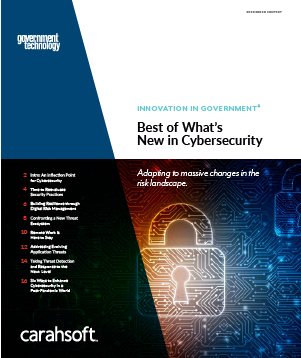Learn best practices for state and local government to adapt to security challenges in a post-pandemic world
For security professionals, the COVID-19 pandemic represents something of a perfect storm. The risk landscape exploded in a matter of days; at the same time, security personnel and resources were stretched exceedingly thin and redeployed from operational tasks to urgent new projects. Now is the time to reevaluate security in light of these massive COVID-driven changes. Immediate steps include understanding and addressing situations where users may be storing sensitive data on insecure home computing devices, as well as dialing back remote access privileges to reduce the risk of inappropriate access or stolen user credentials. Over the longer-term, agencies must develop better monitoring capabilities that help them spot threat activity and potentially risky user behaviors.

- 69% of counties already use some form of artificial intelligence (AI) for cybersecurity
- 37% of cities plan to implement AI-powered cybersecurity tools in the future.
- 51% of cities and counties list ransomware response planning as a top priority.
Download the full report to learn how your agency or municipality can adapt to the new cybersecurity landscape created by COVID-19 to reduce risk, improve visibility and detect threats. Featuring insights from security leaders at F5 Networks, FireEye, McAfee, Palo Alto Networks, RSA and Secureworks.

